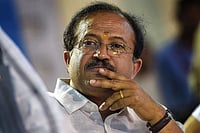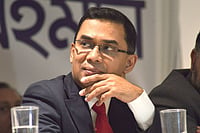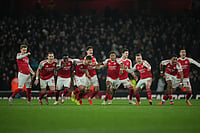The day the country's second-largest drugmaker, Ranbaxy Laboratories, appointed Malvinder Mohan Singh as its new CEO in January 2006, the event was overshadowed by its financial results (2004-05) declared the same day. Singh's appointment, although a high-profile shuffle indicating the family's return in a professionally-run firm, was seen as imminent. What wasn't was that a proven performer recorded a whopping 62 per cent decline in annual net profits. Brian Tempest, the outgoing MD, the company's chief mentor, put up a brave front: "While 2005 was a tough period, we believe business will improve in 2006." But the results indicated that Ranbaxy, and other Indian drug producers, were being edged out in the race to capture the global markets for off-patent (generic) drugs.
Several factors were responsible for the plight of Indian firms in 2005. The US market, accounting for nearly 30 per cent of the overall revenues for Indian players, witnessed severe pricing pressure due to increasing competition. Also, the year saw no key launches by Indian firms, largely due to legal battles they had to fight with global MNCs. Ranbaxy was mired in an expensive battle with Pfizer over the cholesterol-thinning blockbuster drug, Lipitor, which it lost. In total, it signified that it was difficult to wrest a sizeable marketshare in the potentially attractive global generics business and retain it.
In 2002, India had to strengthen its domestic patent laws due to the multilateral WTO agreement. It was then seen as the death of Indian industry, most of which was taking advantage of lax local laws by copying a globally patented drug and selling it domestically. The new norms, cleared by Parliament in 2005, put a stop to this. But a few firms like Ranbaxy, Dr Reddy's Labs and Cipla realised they could earn more in the global generics market. Most analysts were convinced this was a profitable strategy to pursue.
After all, the market for generics—copies of drugs that go off-patent (as per international laws, patents are applicable for specific periods) annually—is growing at 20 per cent per annum and is likely to hit $100 billion by 2010. Also, the annual market size for several profitable off-patent drugs like Ciprofloxacin and Amoxicillin, is a few billion dollars. It was believed that Indian firms, with their research capabilities, low-cost manufacturing, efficiency and experience, would be ideally placed to enter this lucrative market.
Several Indian firms rejigged their businesses and mindsets in a bid to become global generics players. In the past few years, India topped the list of countries filing what're called drug master files (DMFs) and Abbreviated New Drug Applications (ANDAs) in the US, the world's largest drug market. Simply put, ANDAs are filed with the US Food and Drug Administration (FDA) to establish that the drug's patent is not valid and the new entrant can enter the segment. DMFs are also filed with the US FDA to prove that the new entrant's facilities, processes, raw materials, storage and packaging are in line with US safety laws.
However, the success rate of the Indian firms has been low. Thanks to the fierce pricing environment in the US market, which worsened in 2005, product prices tumbled by 30 per cent and pre-tax margins fell by over 20 per cent. In off-patented drugs, margins are generally thin and, therefore, the impact was worse. The number of generics players in the US market is increasing and several MNCs have expanded their capacities, further driving down both product prices and margins.
Globally, the generics industry is getting polarised due to M&A deals. Recently, the Israeli firm, Teva, became the largest player with its acquisition of the US-based Ivax, and another major, Sandoz, bought out Hexal and Eon. With their economies-of-scale advantage and marketing strengths, the MNCs can outflank the Indian firms. Not to forget the MNCs' huge resources. For example, Teva's annual revenues are $6.6 billion, against Ranbaxy's $1.2 billion. "Consolidation and inorganic growth is becoming critical for Indian firms to stay competitive," says Shahina Mukadam, head (research), IDBI Capital.
Realising this early enough, the Indian firms saw their chances in filing ANDAs for drugs that were to go off-patent soon. The US laws allow it, as long as the new entrant can prove that the existing patent will not be infringed by the new drug. The first one to get such an ANDA is called the first filer and gets a 180-day exclusivity marketing period, in which no other generics player can launch a similar drug in that country. This helps the new entrant to have the first-mover advantage and gain a sizeable marketshare due to its low costs. During this 180-day period, generics manufacturers usually enjoy a marketshare in excess of 35 per cent for the drug, which falls once other competitors enter the same segment.
Even this strategy has been foiled by deep-pocketed patent holders like Pfizer, Glaxosmithkline and Merck. These MNCs have stalled the Indian firms' moves by putting up aggressive legal defences and launching their own versions of cheaper authorised generics to prevent marketing exclusivities. Until now, the MNCs have been more successful, although Ranbaxy claims it has 17 drugs in the US with marketshares of over 20 per cent and is among the top two companies in terms of sales of Amoxicillin, an antibiotic.
Take the case of Lipitor, the world's largest selling prescription drug with annual sales of $12 billion. Although Pfizer holds the Lipitor patent until 2011, Ranbaxy felt it can enter this segment by proving that its version of the drug did not violate Pfizer's patent. But a US federal court upheld the validity of Pfizer's patents last December, blocking Ranbaxy's plans. The day the news broke, Ranbaxy's scrip slumped by 9 per cent in a single trading session on the Bombay Stock Exchange. "This is turning out to be a high-risk, low-returns model for Indian firms. Lipitor was an important case for the US pharma industry. The MNCs feel such attacks by generic firms are a huge threat, and will fight tooth-and-nail to protect their turf," explains Mukadam.
"We remain undeterred in our resolve on this issue, and we will press our case in the US Court of Appeals for the Federal Circuit. We are committed to bringing low-cost, reliable medicines to healthcare systems, worldwide," said Malvinder Singh, Ranbaxy's CEO. Apart from Lipitor, Ranbaxy is fighting over half-a-dozen cases against GSK's Valtrex, Astra Zeneca's anti-ulcer drug Nexium, and Takeda's Actos, an insulin sensitiser. Dr Reddy's has challenges pending on blockbusters like Sanofi-Synthelabo's $2.5 billion-a-year blood-thinning drug Plavix and Pfizer's $2.4 billion-a-year anti-depressant Zoloft.
Protracted legal wranglings mean burgeoning costs for the Indian players. The Lipitor case is estimated to have cost Ranbaxy more than $15 million. IDBI's Mukadam says the average legal cost for fighting a case in the US and Europe is $5-6 million. To mitigate the risks of prolonged court battles and regulatory roadblocks, Dr Reddy's has reworked its strategy and brought in venture capitalists to share the burden. Its $56 million-deal with ICICI Venture for legal and ANDA-related expenses is a step in that direction. ICICI Venture will fund the development, registration and legal costs related to the ANDAs and it'll earn a fixed royalty, a percentage of net sales, for five years if Dr Reddy's is able to launch the drug in the US market.
But, even after the Indian firm gets its 180-day exclusivity period, its problems are far from over. Once the original patent holders like Pfizer or Eli-Lily are unable to prevent the entry of the new generics maker, they authorise a competing low-cost generics firm to launch a new copy. The patent holder supplies the drug and, in a single stroke, the market for the drug becomes less attractive due to greater competition. And once the 180-day period is over, the margins are negligible and the initial marketshare vanishes as every low-cost generics maker in the world enters the same segment.
"The recent problems show that Indian firms are on the learning curve," says Mukadam. The problem: the learning is taking a long time and nations like China are adopting the same ANDA strategy. If the Indian firms don't pull up their socks, they'll soon land in a financial coma.
Shifting Migraine
Indian generic drugs firms are finding the going tough due to legal battles and price wars in the US

Shifting Migraine
Shifting Migraine
Published At:
MOST POPULAR
WATCH
MORE FROM THE AUTHOR
PHOTOS
×





















